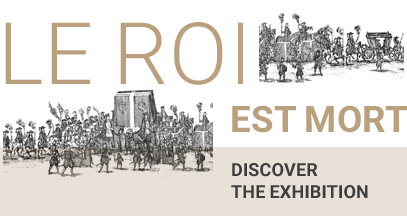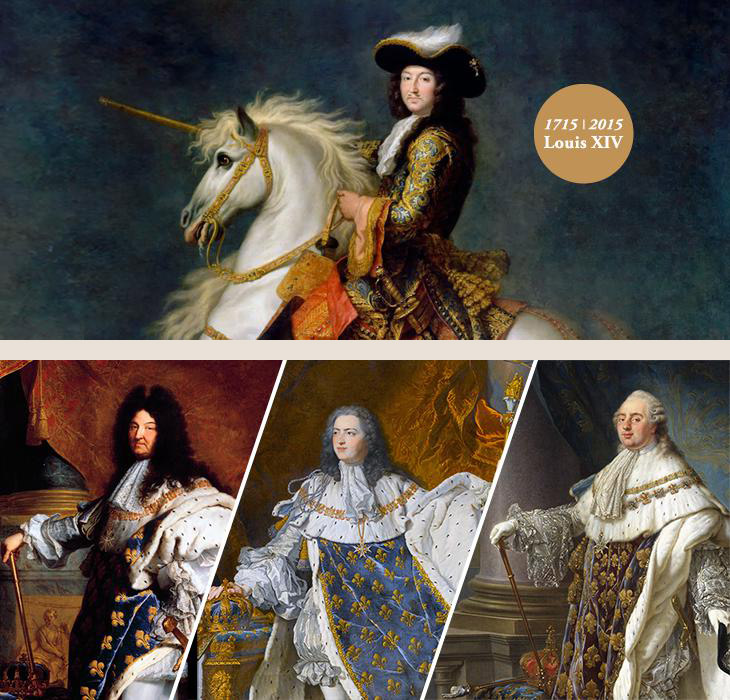The last journey of Louis XIV
By Le Centre des monuments nationaux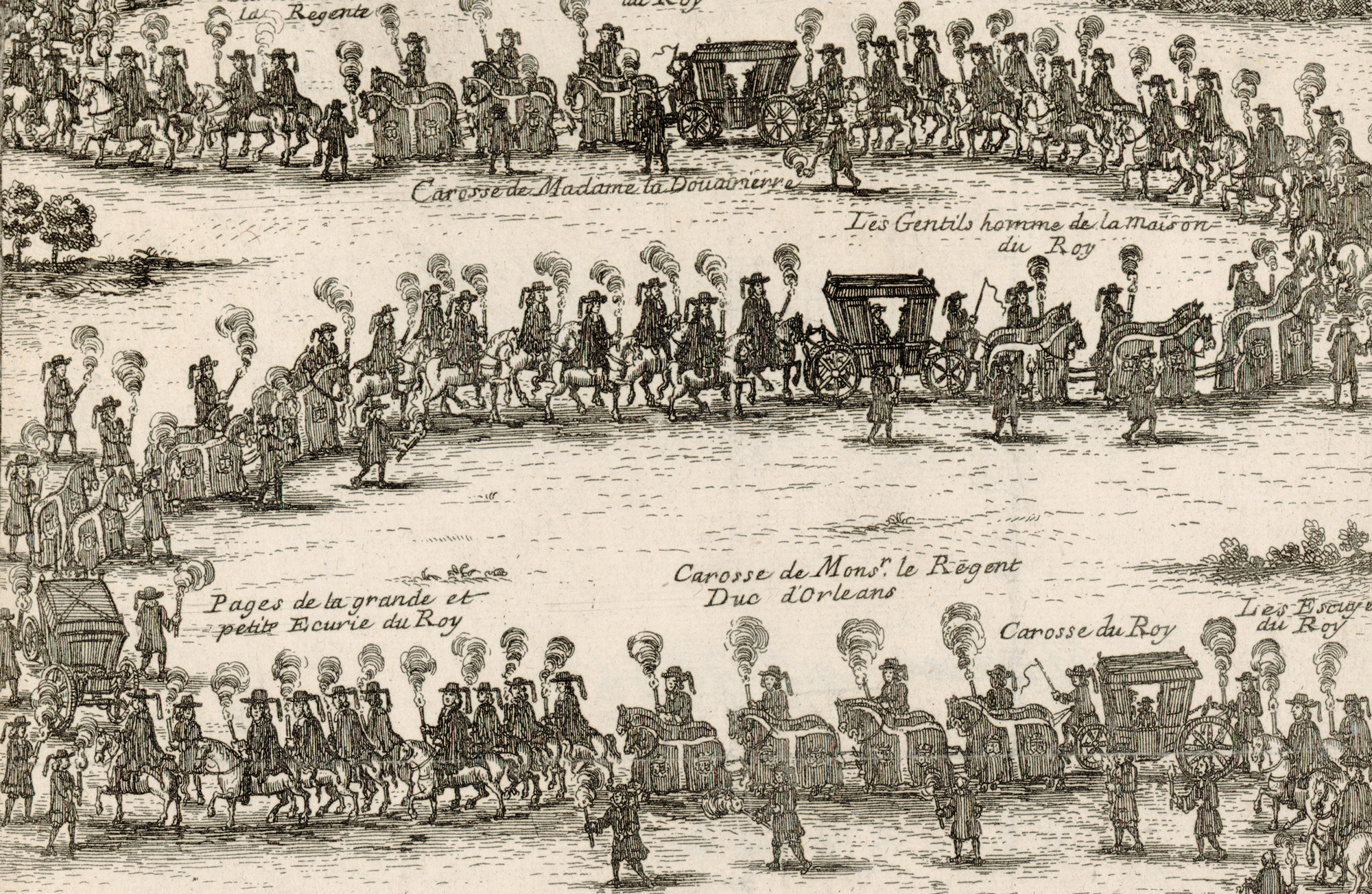
Saint-Denis, the Royal necropolis
Although Saint-Denis Basilica had been used for funerals right from the start, it was Louis IX, the future Saint Louis, who finally established the tradition of burying monarchs there. From then on, all the kings and queens of France with a few exceptions, princes and princesses and some zealous servants of the kingdom were buried there.
Burying a king, modus operandi
The practice of separate burial (body, heart and entrails) gradually arose from the necessity to preserve bodies better during their transportation, and then became established as a systematic practice. In 877, Charles the Bald was the first monarch to be eviscerated, but the practice did not develop in France until the 13th century, following the example of Germany and England. Although Louis XIV’s body is buried in Saint-Denis Basilica, his entrails were transported to Notre Dame Cathedral and his heart placed in the church of Saint-Louis des Jésuites (currently the church of Saint-Louis-Saint-Paul).
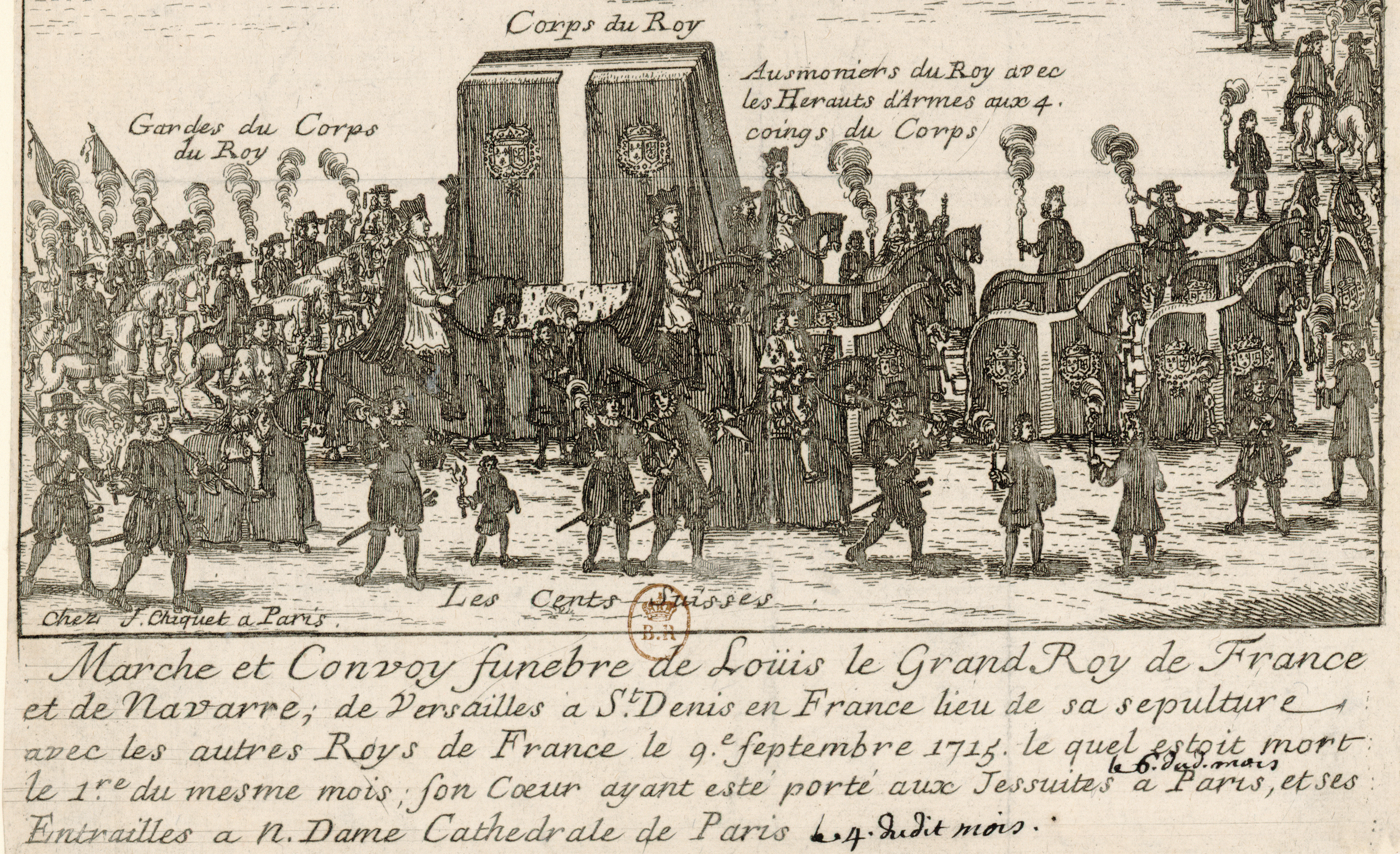 Majestic royal funerals were subject to ceremonial which was regulated like clockwork. However, the burial of Louis XIII, the father of Louis XIV, broke with ancient traditions. He was a pious man who wanted to abandon the pompous and costly rites which accompanied the death and the funerals of monarchs.
Majestic royal funerals were subject to ceremonial which was regulated like clockwork. However, the burial of Louis XIII, the father of Louis XIV, broke with ancient traditions. He was a pious man who wanted to abandon the pompous and costly rites which accompanied the death and the funerals of monarchs.
Henceforth, the king’s body was taken to the Basilica at night time without the customary journey through the capital via Notre Dame Cathedral. From being a royal parade, the convoy of the deceased, drawn by eight horses, became a cortege of mourners once more, thus reflecting Christian tradition. The torchlit nocturnal journey and the arrival at dawn symbolised the Resurrection.
The persistent legend according to which the Sun King was buried very discreetly in order to shield him from the outrage of a people who hated him can now therefore be discounted.
The funeral cortege
On 8 September 1715, eight days after the death of the King, and after Vespers had been said, the coffin was placed on a chariot draped in black velvet. The last journey of the King whose body had been embalmed could begin. At 7 pm precisely, the convoy escorted by the Scots Guards, the military corps in charge of guarding the monarch, set off. It consisted of carriages transporting members of the King’s family, officers, persons of high rank, men of the cloth and horsemen, whilst other less well-off people escorted it on foot. In all, more than 1000 people are estimated to have taken part in the funeral cortege.
The thirty or so kilometres separating the Palace of Versailles from Saint-Denis was covered by the cortege at walking pace, in fully ten hours.
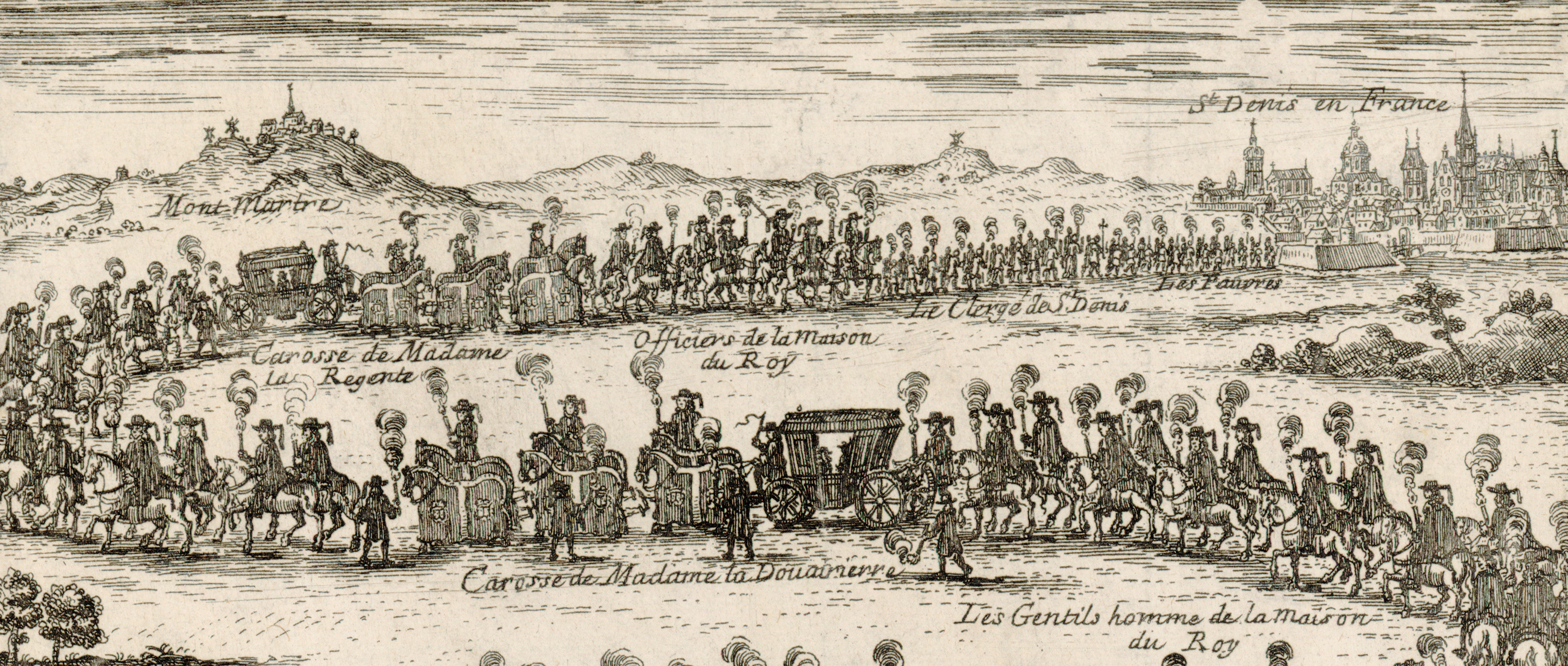
On 9 September, at first light, the convoy was welcomed at the city gates by the Dionysian clergy. After the customary prayers, the king’s body was taken into the Basilica, which had been decorated in mourning.
The grandiose decor had been created by Menus Plaisirs, a department of the Royal household: three strips of black velvet covered the front of the monument; the choir and the nave, also covered in black, were richly decorated.
It was in the upper choir, transformed into a lying-in-state chapel, that the king’s coffin was displayed for 40 more days to a constant flow of visitors before his burial on 23 October 1715.
Now on…
Until 27 September, you can visit the exhibition “The Last Night: Royal Funerals in the time of Louis XIV” presented in the crypt of Saint-Denis Basilica. You can also view the extraordinary facade of the monument, whose restoration has just been completed.
By Le Centre des Monuments Nationaux who preserves, restores, runs and opens to the visit near 100 monuments everywhere in France, including the Saint-Denis Basilica dont la Basilique-cathédrale de Saint-Denis. Follow us on @leCMN.
The exhibition
An exhibition led by the exhibition curator, Thomas Leconte, the administrator of Saint-Denis Basilica, Serge Santos and the scenographer Franck Houndégla, organised by the Centre des monuments nationaux and Saint-Denis Festival, in collaboration with Versailles Centre de musique baroque.
For more information about the exhibition go to the website of the Centre des monuments nationaux: http://www.monuments-nationaux.fr/fr/actualites/a-la-une/bdd/actu/2382/funerailles-royales-au-temps-de-louis-xiv//







